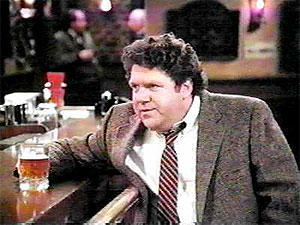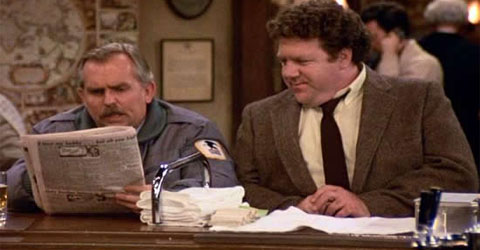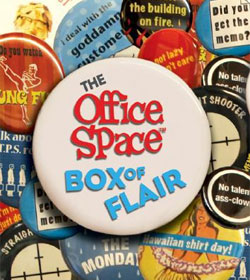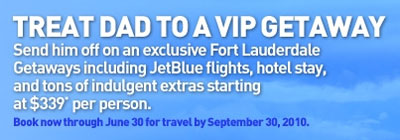Social Media Mondays: Five Ways Social Media Is Like A Neighborhood Bar
A developer I work with owns one in Seattle called the Waterwheel Lounge, and one of my favorites is the local beer bar that I'm the (occasional) Foursquare mayor of, The Church Key. They have an almost ‘Cheers’ like feel to them because the locals show up.
Social networks are like neighborhood bars — people want to feel welcome, like they are part of the neighborhood. This was true during the BBS days (When I was part of Morrison Hotel and Chatline, yo), and it’s true now.
This is how to make your social media site or campaign as successful as a neighborhood bar.
Show them the personality of the place, but give them what they want
Every bar has a personality.
Some are sports bars (or sports lounges in Vancouver), some are singles bars, some are dance clubs, and some are neighborhood bars. Bar customers have certain expectations. For instance, when I visit the Church Key, I'm expecting conversation. When I visit Grant and Green, I'm expecting really loud music from bands like the Missionary Position.
The Waterwheel Lounge is famous in Seattle for their Karaoke nights. Not my cup of tea (The next bad rendition of “Ring of Fire” I hear might be that singer’s last), but their Karaoke nights are huge.
The same goes for websites that want to have a social networking component: users have certain expectations of what they are going to find there. For example, why would there be a StumbleUpon or Delicious share link on a general content website in the hope that three users click on it? Does a LinkedIn share button belong on ESPN.com?
The feel of the site should reflect that. All sites need to build trust with their users, and the first thing sites can do is design a user experience that reflects the attitude of the site. Screen real estate is precious, but making sure that the real estate is appropriate to the users is important. If users are screaming for features, give them to them.
There is nothing more satisfied than an engaged user.
Make sure you know their name
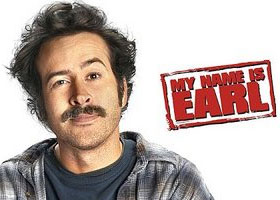 The first day I walked into the Church Key, the bartender Ben asked for my name.
The first day I walked into the Church Key, the bartender Ben asked for my name.
The second day I walked in there, he called me by my first name, and has done so ever since. Since I was new to the neighborhood (and I don't know too many people in San Francisco), I thought this was coolest thing in the world. To this day, I still don’t know the price of what I pay for, and I always overtip.
There are several other bars in the neighborhood, but none of them are like the Church Key: a comfortable sweater that isn't new, but it feels like your best friend.
Websites are like neighborhood bars; visitors want to feel like they belong. Sites like Facebook, Daily Kos and The Huffington Post have such huge readerships. They are their own social networks that call you by your first name when you visit.
The connect features of the major social sites make it easy for users to sign in (they can use their social media accounts to authenticate), and more importantly they establish reputation for the user to other users. Everyone sees friendly faces, and some sites like Yelp! allow users to establish creative personas that contribute to the editorial direction of user generated content.
Remember what they drink and give them more of it
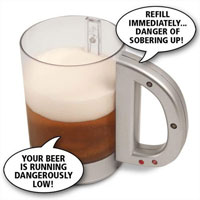 Whenever I walk into the Church Key, I look at the huge beer list of exotic beers, glaze over, and ask Benjamin to get me a beer. I describe a taste (I want something that's a porter yet sweet), and he gets a beer that hits close to what I ask for, if not exactly what I order.
Whenever I walk into the Church Key, I look at the huge beer list of exotic beers, glaze over, and ask Benjamin to get me a beer. I describe a taste (I want something that's a porter yet sweet), and he gets a beer that hits close to what I ask for, if not exactly what I order.
Three or four times I didn't even ask for a beer, and found a 90-minute IPA (one of my favorites) sitting at my barstool when I walked in.
Great websites provide context of where users have been, and give them clues where they are going. If a user has read 58 sports stories about the San Francisco Giants, there's a pretty good chance that the user either is a) a San Francisco Giants fan, or b) has Tim Linceum on his fantasy baseball team.
In either case, the website should present more stories about the San Francisco Giants. How many sites do that? (I know, not enough of them. I’ve done the research.)
Make sure the customers share stories
This is harder than it sounds.
A lot of bars have poorly designed interaction areas — either it’s too loud, or too crowded, or just too uncomfortable. Those are the bars that come and go. Great bars offer a range of places to sit: a bar to sit with the locals, dark corners for late night dates where neither of you want to be seen, places to stand and talk and drink with friends.
Both the Church Key and the Waterwheel Lounge have places where you can find random people to talk to, and places to hide in corners with your friends. But in both situations, they make it easy for story telling and good times.
Great social websites with a social component also make it easy to share stories. Content will be written in a way that’s not only engaging, but encourages conversation. The Huffington Post is a great example — you might not agree with the content, but you can engage in discussion and find a community of your peers (or not so peers).
Don't forget the 42" plasma television or the pool table in the corner
Bar visitors are fickle. Website visitors, even more so.
They like their places like a comfortable old sweater, but if it gets a bit too worn, they want something new.
No matter how many bars are out there, the great ones give visitors something new every once in a while. The Waterwheel does this by offering great contests every once in a while, and installed this awesome patio deck that I’m going to make a special trip up to Seattle to see. The Church Key rotates their beer list, so what they have one month will change the next month.
Great social websites mix it up every once in a while. They try some new things, like Facebook’s Open Graph. They bring in new writers, different content, more video. They also take away features that aren’t working (like the 85 social networking badges you might see) when it’s obvious users are not using them.
Don’t take yourself too seriously and make it feel like a family
Great bars resonate.
Great bars speak to their customers.
Great bars are real.
For both bars, I’ve had very real conversations with the owners. They didn’t wear flair, they didn’t put on a fake smile — they have real conversations with the customers, bullshitting with them about the weather, or the local sports team, or even running bingo or trivia nights that get customers free drinks. They ask how you’ve been, and involve you in the going’s on at the bar.
They care about the customers, and speak in a voice that’s very real.
They make you feel like you’re part of the family.
Great social media brands do that, through great copy and even better social promotions.
For example, Jet Blue has a wonderful promotion that talked about treating dad to a getaway. Foursquare isn’t too serious, and they make it social where visitors can find other visitors at a location. Great social media sites use comfortable, friendly conversations that feel real.
They talk about what they’ve done right, and what they have done wrong. They speak to you as a person and not like a person impressed by flair. They want to make you part of the family, treat you with respect, and remind you that they like you.
$99 Tough Love Resume and Portfolio Review
Tough love. Great Advice. Receive an one hour portfolio review and career coaching session online, or in person if you're in Seattle.
